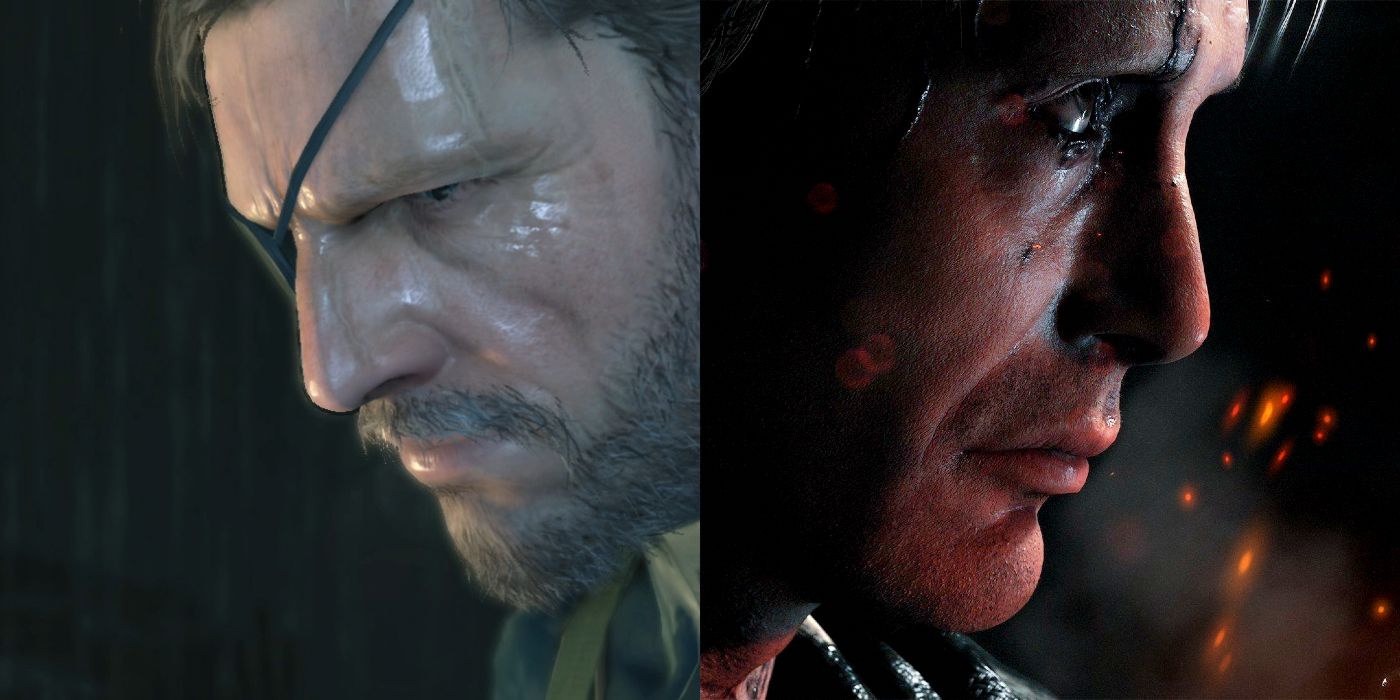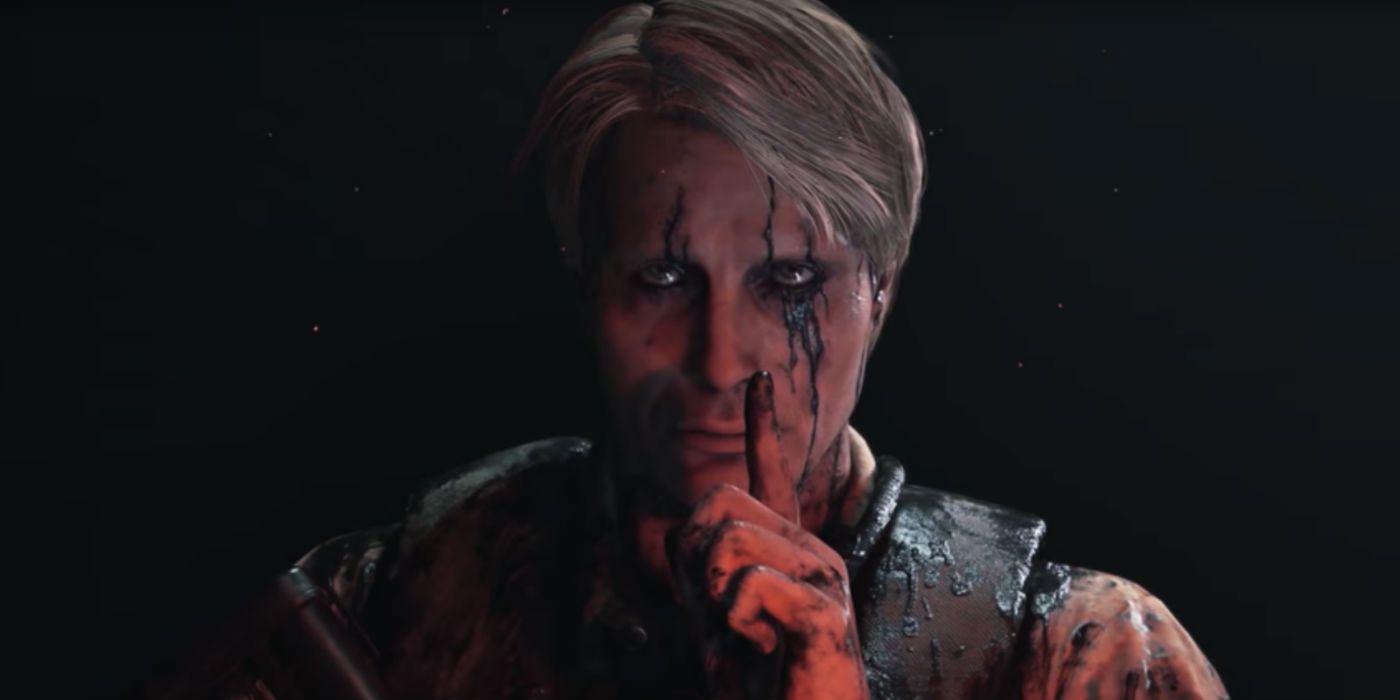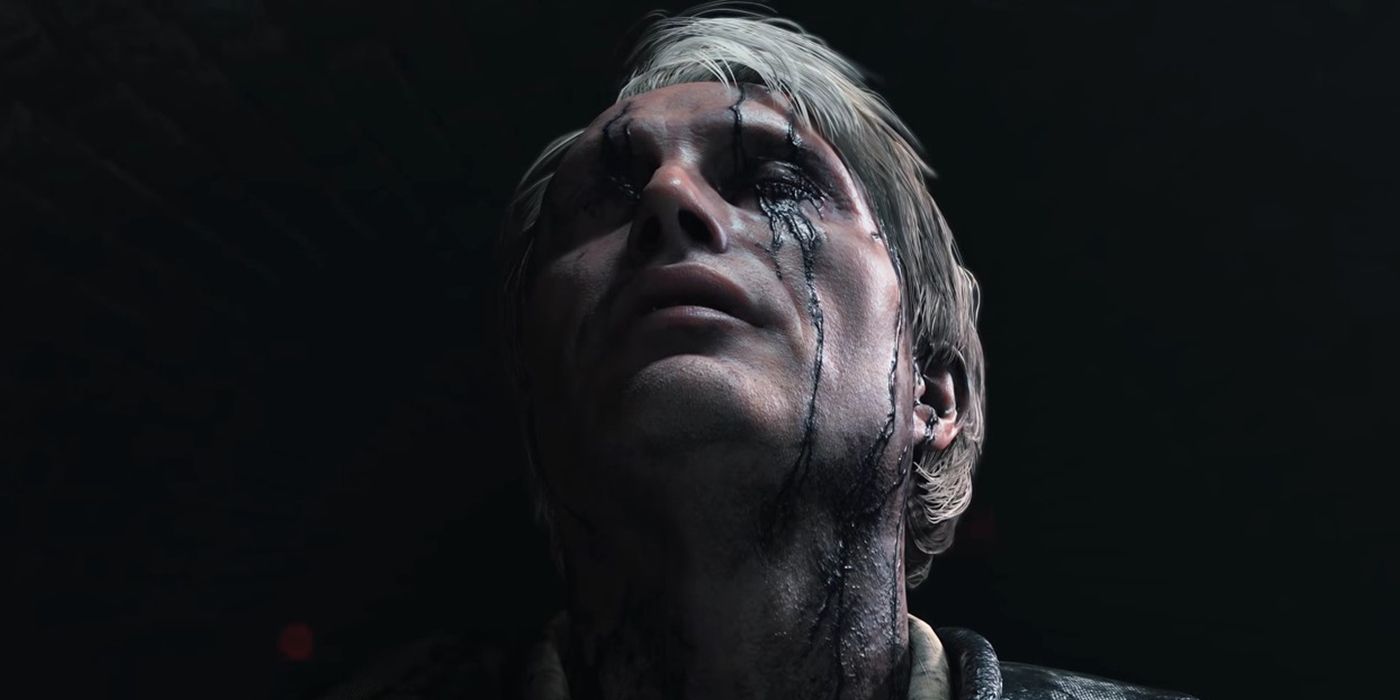When Hideo Kojima created Death Stranding the auteur game director stepped out of the shadow of the Metal Gear Solid franchise, and the character of Clifford Unger symbolized Solid Snake passing the torch to Sam Porter Bridges. Death Stranding is a game that is rife with themes and symbolism that are hard to miss. As Sam travels across the post-apocalyptic wasteland of America he is repeatedly told to reconnect the nation through the spread of the chiral network, an obvious metaphor for battling the polarization that separates many people in the USA, and elsewhere. With Cliff Unger, Kojima presents a metaphor that is less about societal issues and more personal, reflective of his own transition in his works and his career. Unger, a character described as the “Combat Veteran” during boss encounters, fits the same archetype as the various incarnations of Solid Snake and Big Boss.
[Warning: This article contains spoilers for Death Stranding.]
Though the meaning behind Death Stranding altered since its release to reflect changes in world politics, the role of the Combat Veteran, played by Mads Mikkelsen, seems like it was always meant to be an homage to Kojima’s prior work. The Combat Veteran is a recurring boss who pulls Sam from the real world into a series of surreal battlefields. Death Stranding’s story involves the titular event breaking down the barriers between the world of the living and the dead. Most individuals have a “beach” they travel to when they die, in the game’s lore, but Unger controls a collective beach formed from the emotional attachments of soldiers who died in combat. Unger was a U.S. Special Forces Captain prior to his death, and commands squadrons of skeletal soldiers.
Unger seems focused on reclaiming B.B., the game’s truncation for Bridge Baby, and he and his revenant platoon appear hellbent on seizing the child using military force. Kojima’s Death Stranding Director’s Cut trailer contained spoilers, but it did not reveal the full truth behind Cliff Unger. When Sam attaches his B.B., later named Lou, he sees visions from a B.B.’s point of view of Unger visiting a hospital room. Unger speaks both to his comatose wife, Lisa Bridges, and to the B.B. itself. Players are led to believe Unger is Lou’s father, an angry specter seeking to reconnect with the child that was taken from him. The implication is that Unger wishes to bring Lou into the world of the dead, giving Sam reason to battle the Combat Veteran and his soldiers.
Clifford Unger's Secrets Are Revealed Very Late In Death Stranding
Many of Death Stranding’s biggest reveals come very late, and the real story of Cliff Unger after the climax of the game’s conflict. Flashbacks that were shown in pieces each time Sam connected to his B.B. are finally played out in a single cutscene at this point. Sam has been told that Death Stranding’s Bridge Babies cannot leave their pods, as Deadman projects only a 30 percent chance of survival. Sam learns that B.B.s can, in fact, leave the pods and grow up to be healthy, functional adults, as he was one of them. A Bridge Baby is a premature fetus removed from a braindead mother via cesarean section. They are used by Porters in Death Stranding to detect the ghostlike B.T.s, since the B.B.s are connected to the world of the dead and sensitive to its denizens.
The flashback reveals that Cliff Unger’s wife was comatose, and their child was selected to become one of the prototype Bridge Babies. Unger was aided by his former squad mate John Blake McClain (evidence that Death Stranding’s naming conventions are more absurd than Metal Gear’s), who allowed him a chance to steal his child from the government facility so it could have a chance at a normal life. Though he was unable to escape with his B.B., and ultimately shot and killed, Unger managed to remove the child from the pod before his death. McClain went on to wear a skull mask and take on the name Die-Hardman, becoming Bridges' director. Cliff and Lisa’s child survived removal from the B.B. pod and was raised by U.S. President Bridget Strand as her adopted son, Sam.
The idea that Death Stranding is a successor to Metal Gear comes across clearly in Cliff Unger’s narrative. The lifelong soldier had a son who is not a warrior, but a courier. The Metal Gear games were described as stealth-action titles, where optimal play involves unseen infiltration in most cases. Though the Death Stranding Directors Cut arguably eroded social themes with quality-of-life improvements that make it easier to play as an offline game, using bridges and ladders laid down by other players remains integral to the game’s experience. Gameplay in Death Stranding carries a theme of highly visible trailblazing. Die-Hardman encourages Sam at one point to leave a trail for others to follow, and the gameplay involves leaving objects like signs, bridges, and ropes, that can be used by other players. This form of cooperative multiplayer was a godsend in the original game.
Unger's Death Symbolizes Leaving Metal Gear For Creative Freedom
The cooperative multiplayer of Death Stranding stands in contrast to Metal Gear Solid 5, where online players could invade other players' bases. Death Stranding has limited stealth sequences where Sam might circumvent the MULEs who try to steal his cargo - though human enemies were one of the worst parts of Death Stranding - or crouch and hold his breath to avoid detection by B.T.s. Still, Sam is the opposite of an espionage agent who operates from the shadows and leaves a trail of bodies. He travels openly across the ruins of America, bringing hope and connection to the distant cities that house human survivors. The game’s boss fights, particularly the clashes with the Combat Veteran and his personal army, contain traditional gunplay this is familiar to Metal Gear fans. These sequences, along with the entirety of Cliff’s story, elegantly sum up the transition from Kojima’s former franchise to his latest achievement.
There are other meanings a player could read into the disturbing creation of B.B.s in Death Stranding, but Unger’s dreams for his B.B. seem to sum up Kojima’s ambitions as a developer. In flashbacks Unger promises Sam that he will eventually be free of the pod, that he can freely travel the world. Unger says the boy could even go into space and shows him a small astronaut model matching the Kojima Productions mascot. The Combat Veteran dreamed of his child being free of restraints, much like the freedom Kojima experiences as an independent developer following separation from Konami. A father who was a lifelong soldier had a son who delivered hope and connection to a shattered country. Beyond the larger messages on life and society, Kojima embeds commentary on his own career as a creator: The Combat Veteran had to die to give freedom to Sam Bridges, and separation from Konami and Metal Gear Solid allowed for the uniquely personal vision of Death Stranding.



